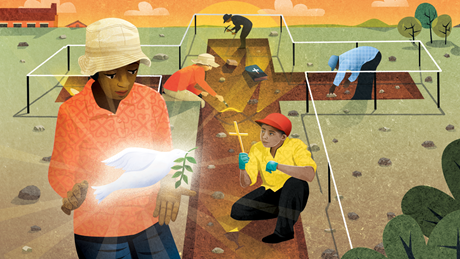In Colonial Williamsburg, a neglected Christian past is being restored.

They dug up broken bits of lamp, the foot of a porcelain doll, a piece of what was once a bowl, and brick fragments from the Baptist church where African Americans worshiped while they were still enslaved. They excavated down to the foundation. Carefully clearing away the earth, they exposed the cross-stacked bricks at the base, dusted them off, and called Connie Matthews Harshaw.
Harshaw stood at the edge of the dig. A member of the historic black First Baptist Church in Williamsburg, Virginia, she had pushed for this project before anyone knew if they would find anything worthwhile. She had come a long way by faith. Now the archaeologists had something to show her.
“I see it,” she said. “We were here and we were strong. Through it all, we kept the faith, and we were hopeful. That’s a story to tell.”
Colonial Williamsburg, the living history museum that recreates the life of the 18th-century town that was then the capital of the colony of Virginia, is excavating a black Baptist church. The first phase was finished in November, and the second started this January, with the ultimate aim of reconstructing the building and recovering its history.
First Baptist was founded by free and enslaved African Americans in 1776, not long after the signing of the Declaration of Independence. It was illegal for black people to congregate and worship then, but they did anyway. At first they met secretly in a hidden brush structure. Then a Virginia woman decided to let the man she owned become a Baptist minister, and Gowan Pamphlet became the first ordained black man in America in 1772, a dozen years before the better-known Lemuel Haynes. Inspired by the Great Awakening, Pamphlet preached sin, salvation, and the ...
from Christianity Today Magazine
via

.gif)

.gif)

.gif)
.gif)
